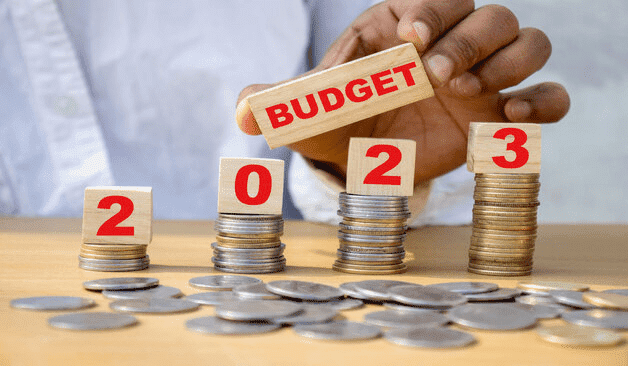
What do we foresee from the Union Budget 2023?
On February 1, India’s honorable - Finance Minister Nirmala Sitharaman will present the Union Budget 2023.
All eyes are on how the government manages the fiscal imbalance and inflation. The budget deficit is more likely to rise if the government spends more on capital and revenue expenditures than anticipated. This might lead to increased market borrowing by the government, which would raise interest rates and lead to inflation.
General expectations from the Budget 2023:
India's Budget 2023 may anticipate a nominal GDP growth rate of around 11%. India is expected to lower its estimated nominal Gross Domestic Product (GDP) growth for the current fiscal year to approximately 11% in the annual budget due next week, according to two government sources.
Experts are looking forward that the administration will practice budgetary restraint and treat this more as a simple budget matching exercise than a policy exercise. According to Reuters sources, suppressed external demand caused by a potential U.S. recession could put pressure on nominal GDP growth, which takes inflation into account and serves as a baseline for estimating tax receipts.
The finance ministry has stated that initiatives that promote domestic manufacturing and exports and offer a variety of support measures would be given priority in the cash allocation process as it has started its pre-budget conversation with various ministries and departments. A key government official stated that the budget's "broader aim" will be to "encourage growth with the primary focus on local manufacturing and exports."
In light of worries about a slowdown in the world economy and high prices, the Indian government is anticipated to use the next budget to boost the Indian economy. In the three months from July to September, the $3.2 trillion economy expanded by 6.3% compared to the same period last year, more than halving the 13.5% growth seen in the prior three months.
While creating new jobs and decreasing poverty are top priorities for the Indian government, the government still has a difficult task upholding budgetary responsibility, a crucial indicator closely followed by investors and rating agencies.
Benefits expected out of Taxation System:
The basic exemption threshold for individual taxpayers under the current tax bracket is ₹ 2.5 lakhs, and it hasn't changed since 2014–15. Anyone whose income is below this amount is implied to be excluded from filing income tax forms. The income tax exemption threshold is now likely to increase to 5 lakhs in the upcoming budget.
Additionally, the taxpayers also anticipate that the government will likely increase the standard deduction from 50,000 to 1 lakh rupees. The standard deduction cap should be increased, say experts, to account for the rising inflation and rising cost of living.
Taxation for Salaried Professionals:
Section 80C of the tax code allows individuals to deduct a significant sum for a range of assets, including Public Provident Funds, LIC premiums, and National Savings Certificates, among others. The threshold is anticipated to increase from the current sum of Rs. 1.5 lakhs to Rs. 2.5 lakhs. Therefore, the purchasing power of taxpayers will rise.
An individual is allowed to deduct up to Rs. 50,000 worth of health insurance premiums under Section 80D. For senior citizens, this threshold is Rs. 1 lakh. Due to an unexpected rise in medical costs and insurance premiums, the COVID epidemic has had a negative financial impact on consumers. As a results, the nation now has a mounting medical debt.
Industry and Sector-wise SOPs:
1. Fertilizers:
In order to reduce a fiscal deficit that grew during the COVID-19 pandemic, India plans to reduce spending on food and fertilizer subsidies to 3.7 trillion rupees ($44.6 billion) in the fiscal year beginning in April, a 26% decrease from this year, according to two government officials. About one-eighth of India's fiscal year 2019 budget, or 39.45 trillion rupees, is spent on food and fertilizer subsidies alone.
2. Healthcare:
The health budget should be boosted by 30–40%, according to industry group PHDCCI, due to the country's expanding need for medical infrastructure and amenities.
Since COVID-19, healthcare has been a recurring topic in the press, and as new viral variations and sub variants are discovered on a regular basis, it continues to be a source of debate and worry. It is recommended that the budgetary allocation for the healthcare sector be increased by at least 20% from the previous year, or at least INR 1 crore, which can be divided among several departments such ABDM, Infrastructure, Education, Human Resource, Research, and other programs.
3. Real Estate and Infrastructure:
With a 50% increase in sales transactions in 2022 over the previous year, Indian real estate is in good shape. The optimistic attitudes will persist in 2023, according to Nakul Mathur, MD of Avanta India, supported by a strong economic outlook, growth in the employment market, and an increase in per capita income.
Following the COVID pandemic, the residential sector is seeing a significant recovery. With sales recovering in many of the country's major markets, 2022 was one of the most eventful years for Indian real estate. The upsurge in residential sales and commercial leases was caused by strong economic growth and an increase in demand. The sector predicts a significant rebound in housing demand in 2023 and expects the Union Budget of 2022 to be supportive and enabling. In order to support the business, the industry is looking to Finance Minister Nirmala Sitharaman for a few significant tax exemptions and a reduction in stamp duty.
4. Automobile Industry:
The automotive industry wants to see more funding allocated for electric vehicles, with the majority of automakers now including EVs in their product lines. They also anticipate uniform rates for the GST levied. To boost electric mobility, the Society of Manufacturers of Electric Vehicles requested on Tuesday that the FAME II scheme's subsidies for EVs be extended and expanded to cover light- to heavy-duty commercial vehicles.
FAME II, the second phase, is a three-year subsidy scheme. It seeks to assist with the electrification of shared and public transportation, including the approximately 7,000 electric and hybrid buses, the 500,000 lakh electric three-wheelers, the 55,000 electric four-wheeler passenger cars, and the 1 million electric two-wheelers. The industry group recommended a consistent GST rate of 5% on electric vehicle spare components in its pre-Budget proposals.
5. Banking:
Banks would first benefit from changes to capital gains tax laws that would promote economic consumption. For instance, a tax exemption on short-term capital gains up to Rs. 1 lakh will increase market participation overall and promote investment. The personal income tax structure should also be simplified by removing any unnecessary complexity, particularly those relating to exemptions.
The sector anticipates that the Central Government will attempt to increase the direct tax slab and will also push for policies that would boost the economy and provide the average person more economic power through entrepreneurship. They anticipate the government to propose a number of policies that would encourage SMEs (Small and Medium Enterprises), particularly the smaller ones, to resume operations.
6. Technology:
The year 2022 would be remembered for being anything but a ‘tech bull’-year, unlike the two previous years as global economic headwinds prevailed and slammed most companies in the sector with an unanticipated slowdown. India may have a positive attitude toward technology and "digital," but more work needs to be done to support the nation's digital-first strategy as it strives to become a USD 5 trillion economy. Although the next Union Budget for the current fiscal year on February 1, 2023 is probably going to focus on reducing inflationary pressures, there are still steps that need to be taken to assist development so that more people may benefit from the power of "digital."
This, according to Balasubramanian, may be accomplished by focusing heavily on enhancing digital infrastructure and internet penetration in Tier 2 and Tier 3 cities and assisting them in becoming India's future centres for technology and digital talent. Wipro Chairman, Rishad Premji, advocated for steps to quickly expand India's existing impressive digital pool, which can come from outside the Tier 1 cities, in a speech at an event in November 2022. The best talent should be sought out in order to create innovative models that are relevant in the digital economy.
Disclaimer: ICICI Securities Ltd. (I-Sec). Registered office of I-Sec is at ICICI Securities Ltd. - ICICI Venture House, Appasaheb Marathe Marg, Prabhadevi, Mumbai - 400 025, India, Tel No : 022 - 6807 7100. I-Sec is a Member of National Stock Exchange of India Ltd (Member Code :07730), BSE Ltd (Member Code :103) and Member of Multi Commodity Exchange of India Ltd. (Member Code: 56250) and having SEBI registration no. INZ000183631. Name of the Compliance officer (broking): Ms. Mamta Shetty, Contact number: 022-40701022, E-mail address: complianceofficer@icicisecurities.com. Investments in securities markets are subject to market risks, read all the related documents carefully before investing. The contents herein above shall not be considered as an invitation or persuasion to trade or invest. I-Sec and affiliates accept no liabilities for any loss or damage of any kind arising out of any actions taken in reliance thereon. Such representations are not indicative of future results. The securities quoted are exemplary and are not recommendatory. The contents herein above are solely for informational purpose and may not be used or considered as an offer document or solicitation of offer to buy or sell or subscribe for securities or other financial instruments or any other product. Investors should consult their financial advisers whether the product is suitable for them before taking any decision. The contents herein mentioned are solely for informational and educational purpose.










